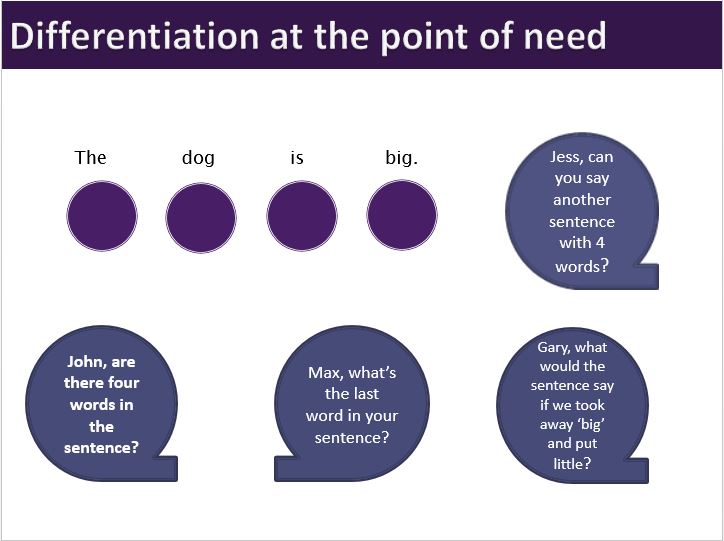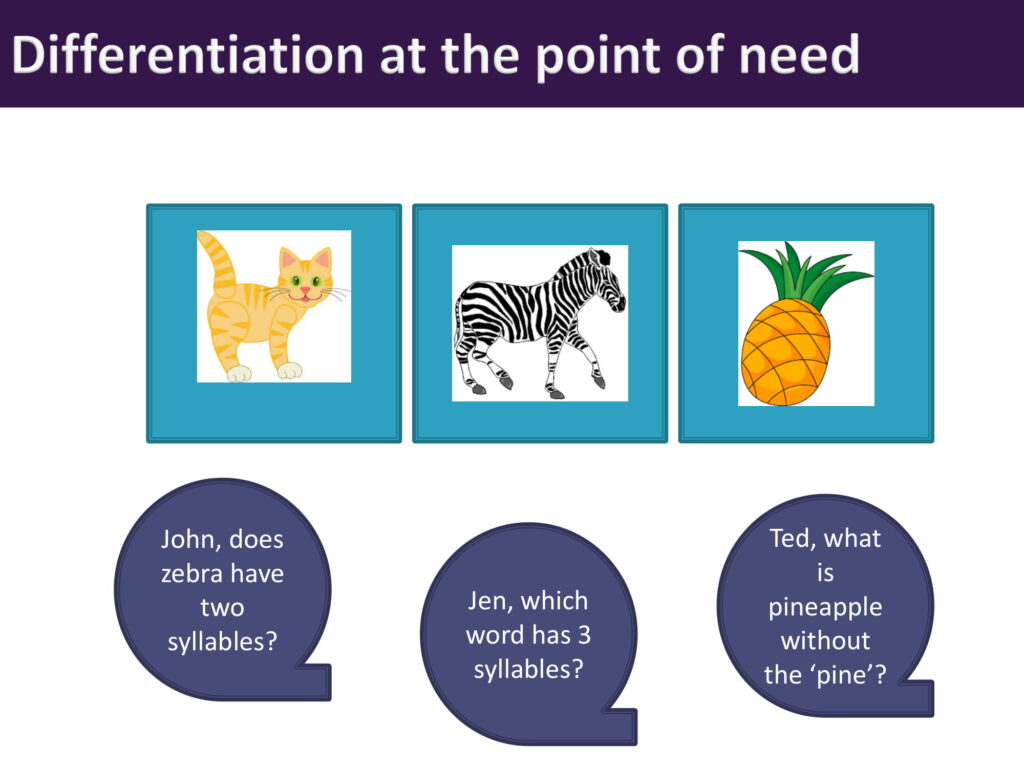In the first few years of formal schooling children are acquiring the essential skill of learning to read. There is overwhelming research evidence that demonstrates early reading progress is most likely to occur when the early reading instruction includes systematic and explicit teaching of phonics, especially for those children who are at greatest risk of reading difficulties. These terms are often loosely used, with many programs and teachers claiming they teach this way, however it is essential to understand what these terms mean in the context of research-based practice.
Systematic phonics instruction
- Instruction that starts with a clearly planned sequence of phonics elements
- Logical progression of skills and knowledge (e.g. introduction of carefully selected and sequenced letter sound relationships in a logical order)
- Clearly defined objectives or statements of what students will do in each lesson
- Planned and sufficient practice to build fluency and ensure learning is retained
- Activating previously learned skills and applying them to new examples.
Explicit phonics instruction
- Teaching that explains, models and demonstrates the content or skill to be learned
- Uses clear and unambiguous language
- Has a defined and stated learning objective
- Teacher modelling and then teacher guidance is followed by scheduled opportunities for practice with immediate feedback.
- Student/teacher interaction is high, and students are active and engaged participants
- Does not leave learning to chance.
Explicit instruction ensures all children learn
A carefully planned sequence for teaching is constructed in logical steps from simple to complex content and skills, commencing from the point at which the students are already competent. Clear and precise teacher explanation, followed by guided and independent practice, accompanied by frequent monitoring and assessment, ensures that every student is learning.
The NSW Centre for Education Statistics and Evaluation report What works best: Evidence based practice to help improve student performance clearly describes explicit instruction and includes examples related to beginning reading skills.
Teaching phonics only, incidentally (or ‘in context’), runs the risk that not all grapheme-phoneme correspondences will be taught or may be presented in a way that causes confusion and impedes learning. Furthermore, incidental approaches often encourage use of semantic (meaning) and syntactic (language structure) cues before a phonic prompt for working out how to read a word. This is known as the three cueing system or searchlights model, and is not supported by evidence. Reading Recovery and L3 both use this approach.
More on this can be found on our Teaching grapheme-phoneme correspondences page.
Differentiation is at the point of need
Explicit teaching does not limit student progress. Explicit instruction can allow for students who are at different points in their learning by differentiating at the point of need or in independent practice. This does not mean that you must create complete new lessons or activities for students in the same class. Differentiation can be done with skilled questioning and responses to student learning in the same lesson and with the whole group.
These two examples demonstrate how skilful questioning can differentiate student learning within the same lesson. The students were exploring phonological awareness, a skill that underpins the teaching of phonics. The questions become increasingly more complex based on student understanding.
Slides used with permission from Dr Lorraine Hammond Edith Cowan University. W.A.
References and reading
Archer, A. & Hughes, C.A. (2011).
Explicit instruction: Effective and efficient teaching.
Guilford Publications
Carnine, D. (2005).
Teaching struggling and at-risk readers: A direct instruction approach.
Pearson/Merrll Prentice-Hall.
Hempenstall, K. (2016).
Read about it: Scientific evidence for effective teaching of reading.
Five from Five/MultiLit
Konza, D. (2014).
Teaching reading: Why the “Fab Five” should be the “Big Six”.
Australian Journal of Teacher Education
Rosenshine, B. (2012).
Principles of instruction: Research based principles that all teachers should know.
American Educator
Wheldall, K., Stephenson, J. & Carter, M. (2014).
What is direct instruction?
MUSEC Briefings, July 2014.




